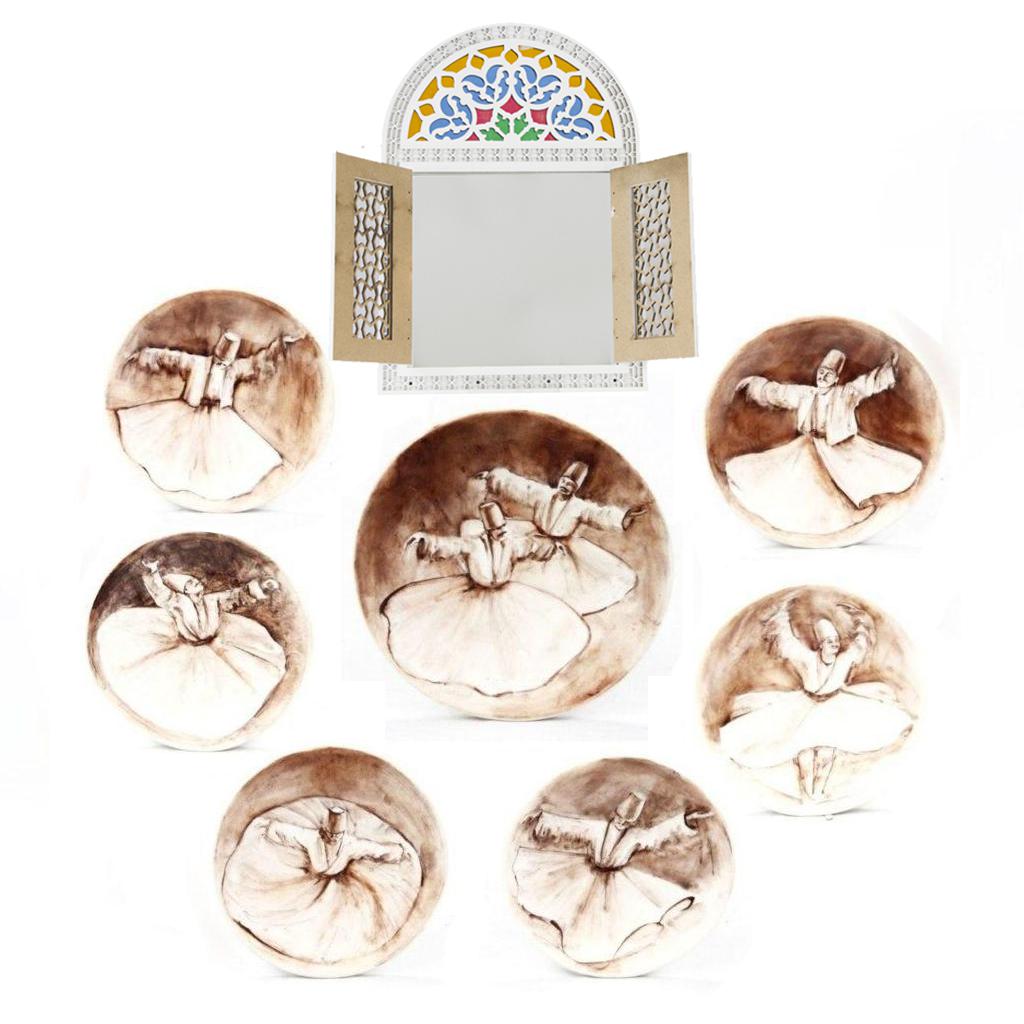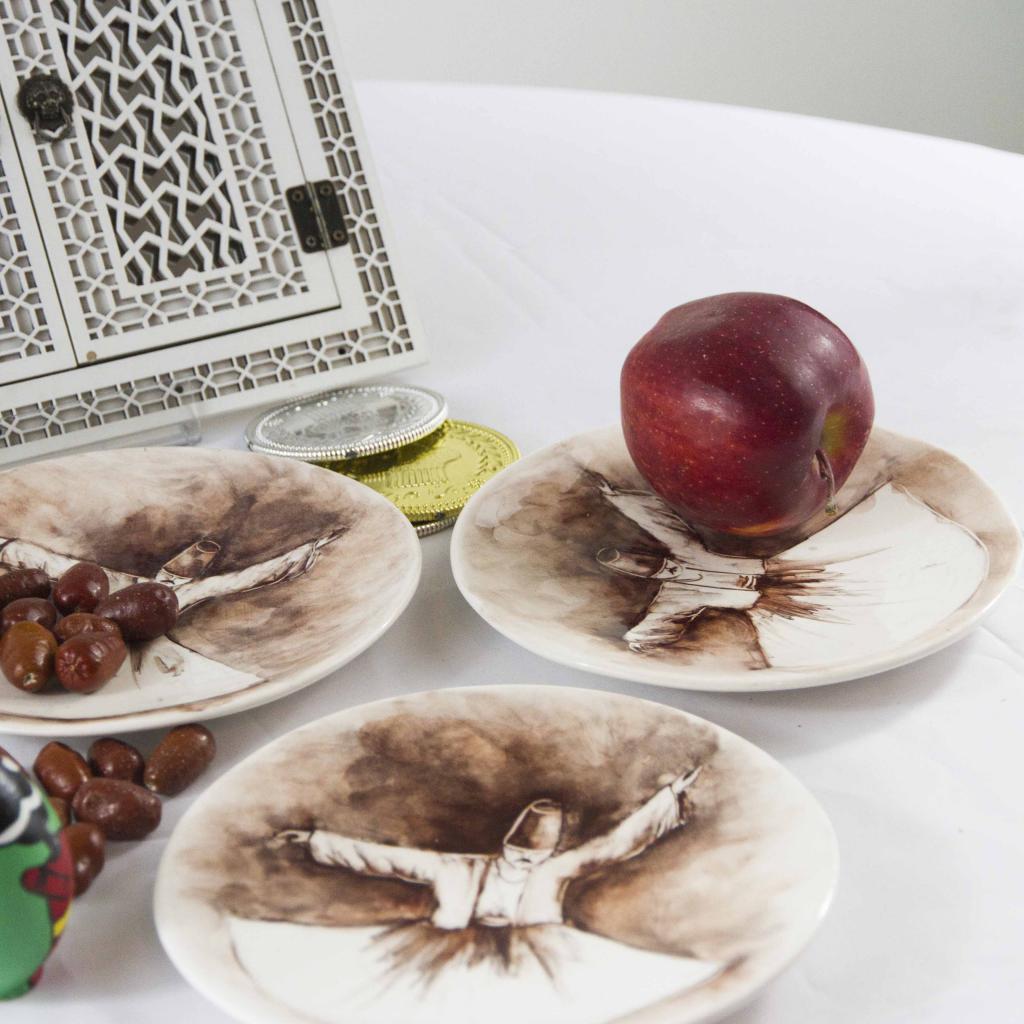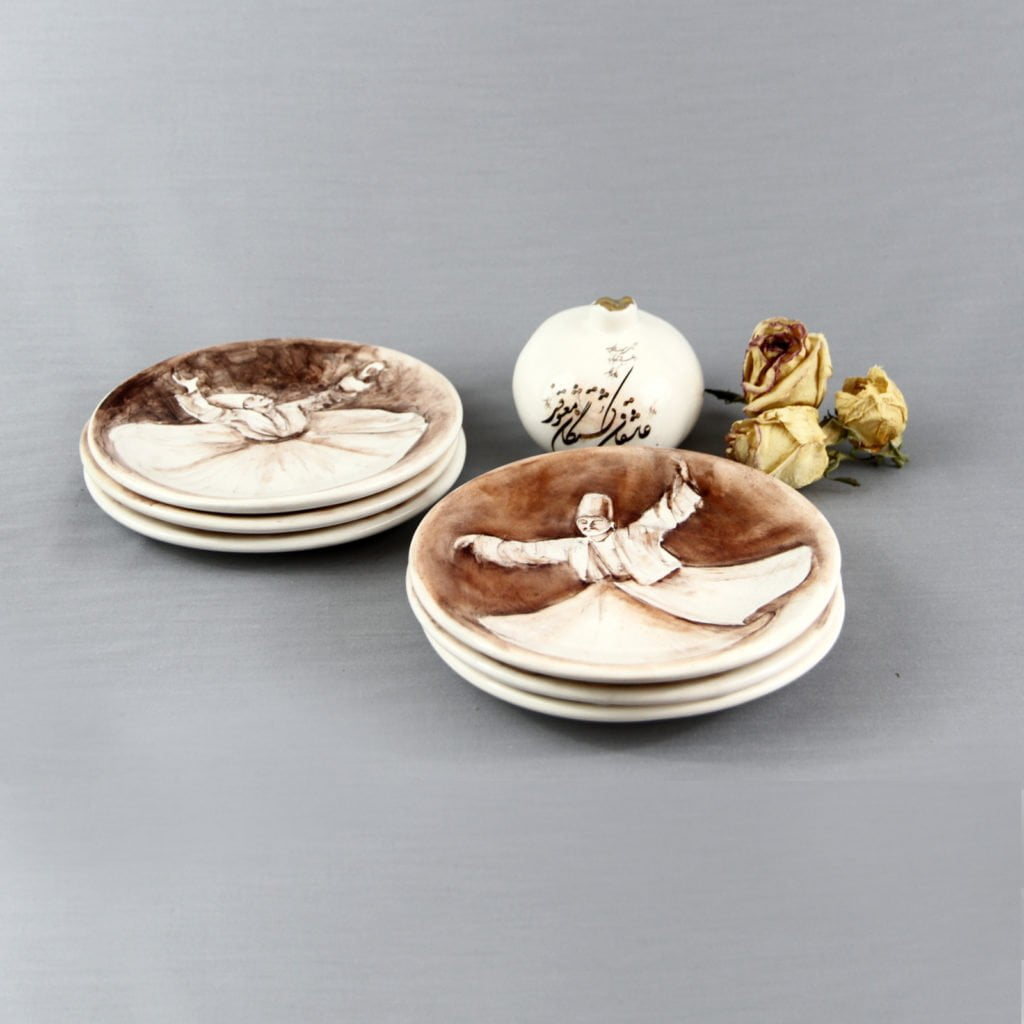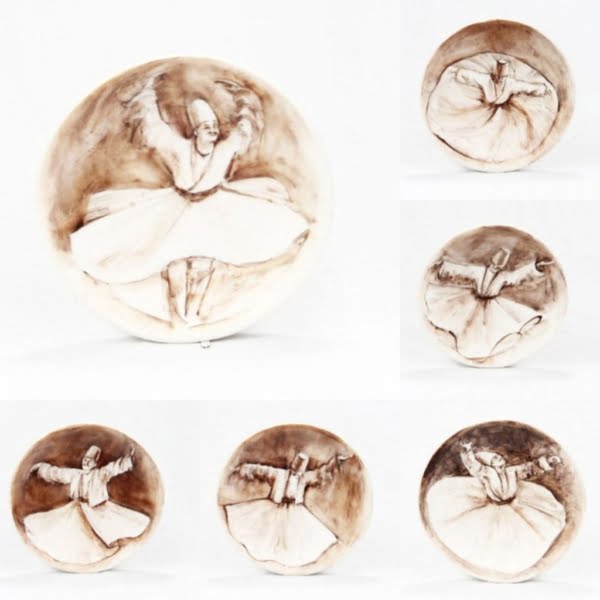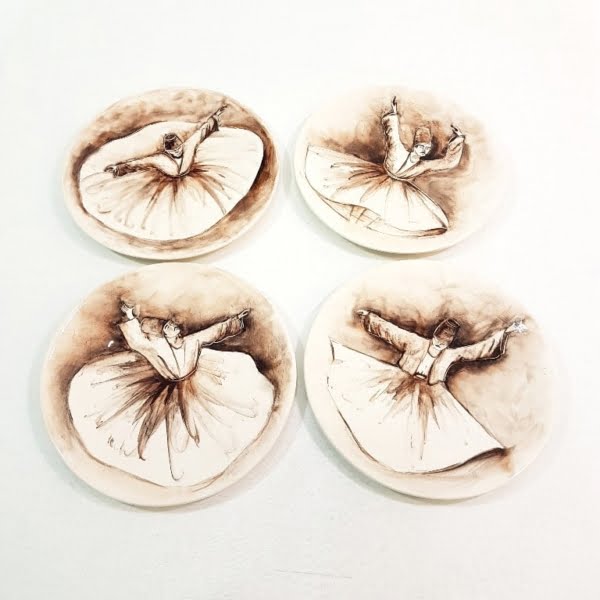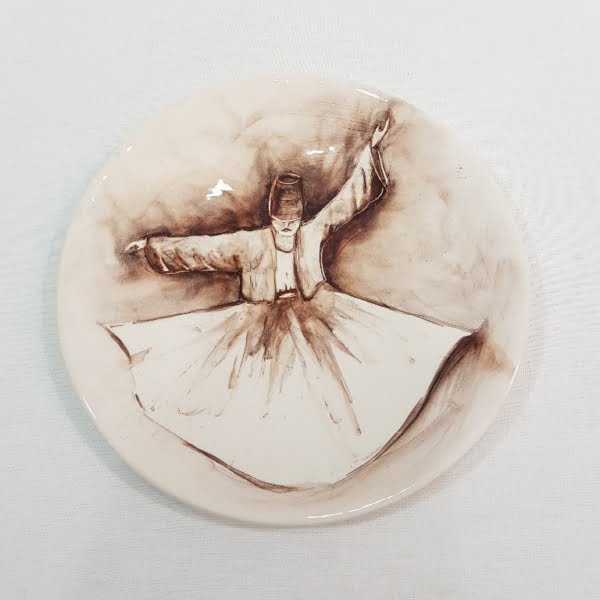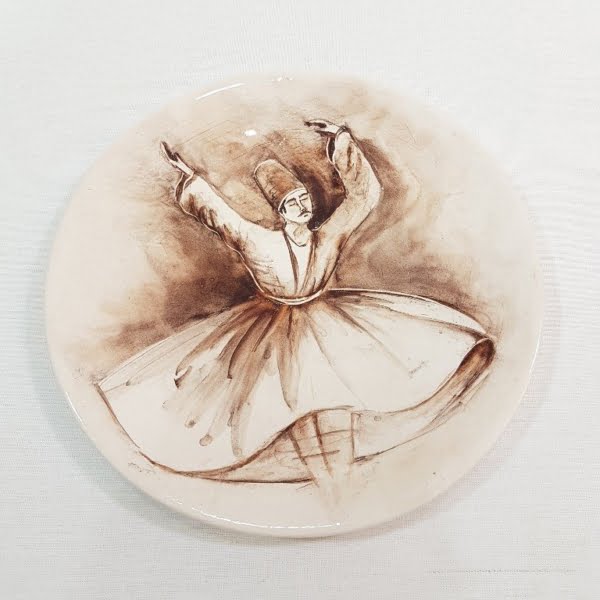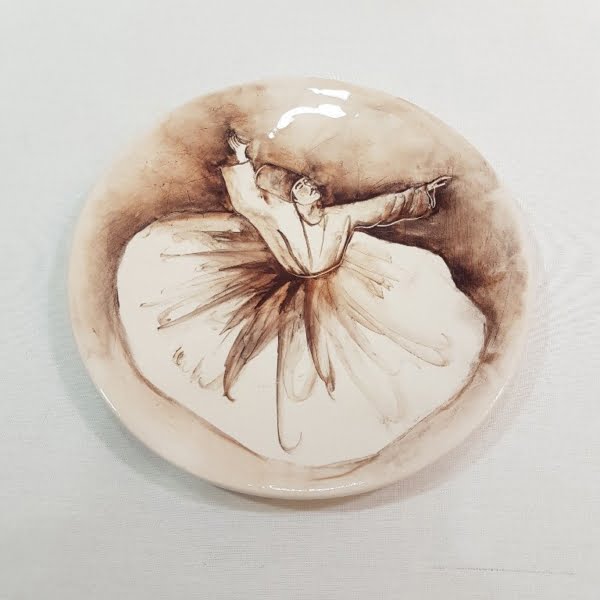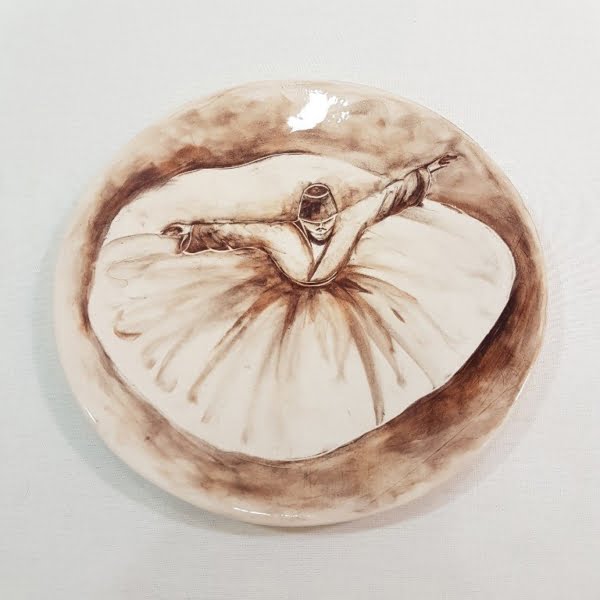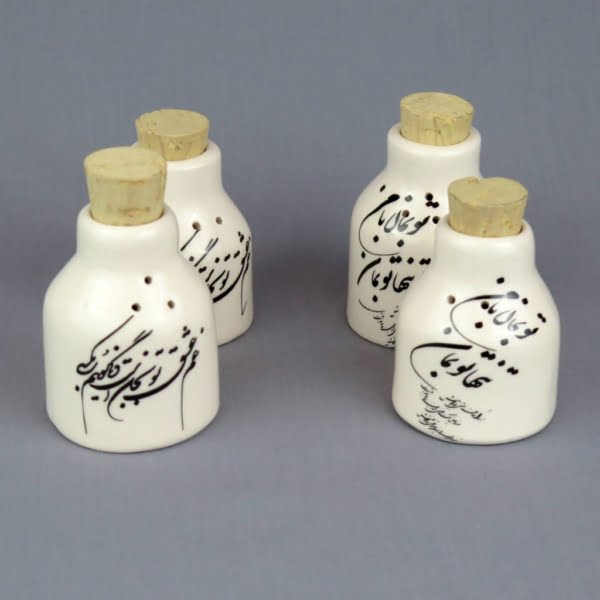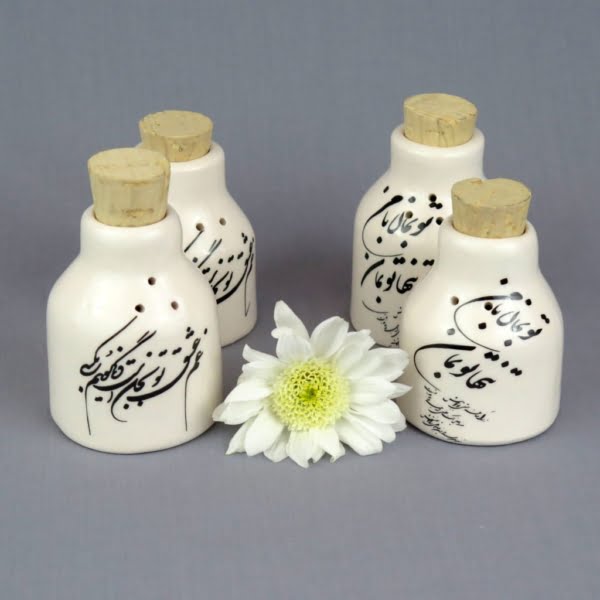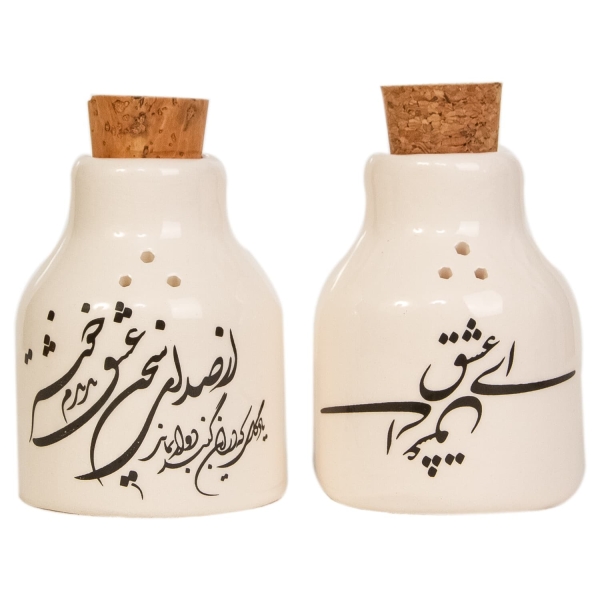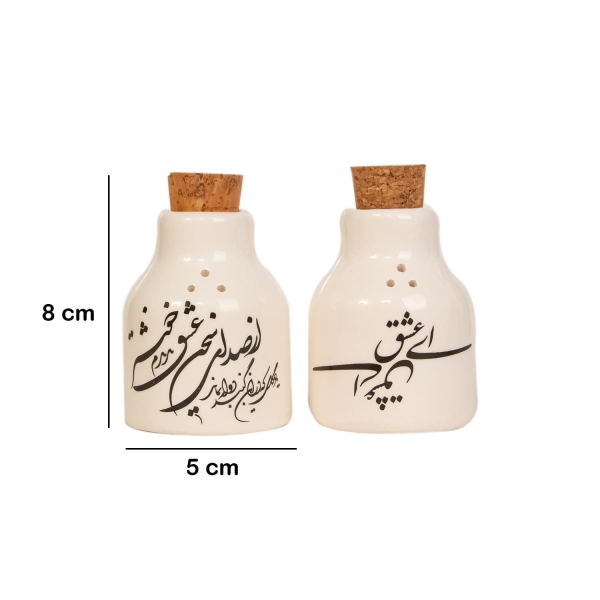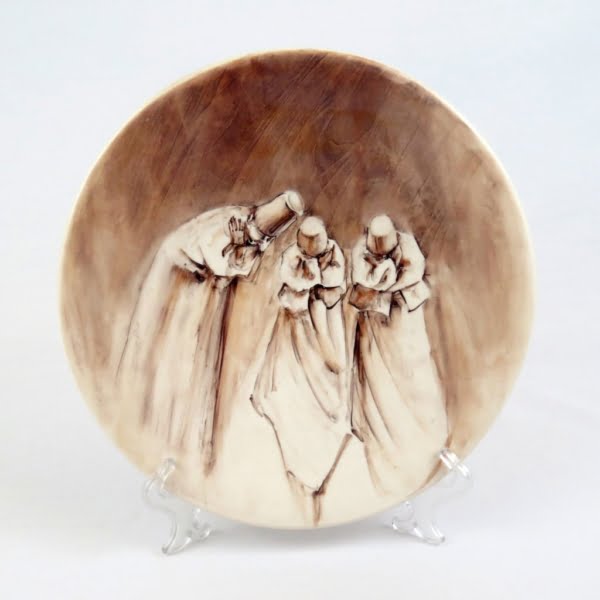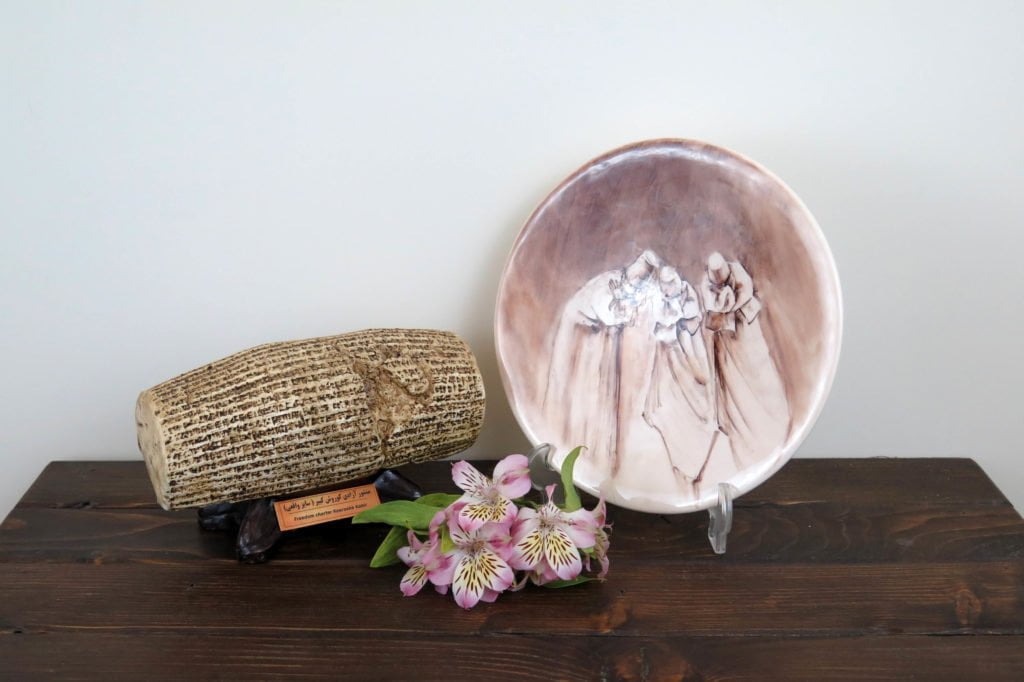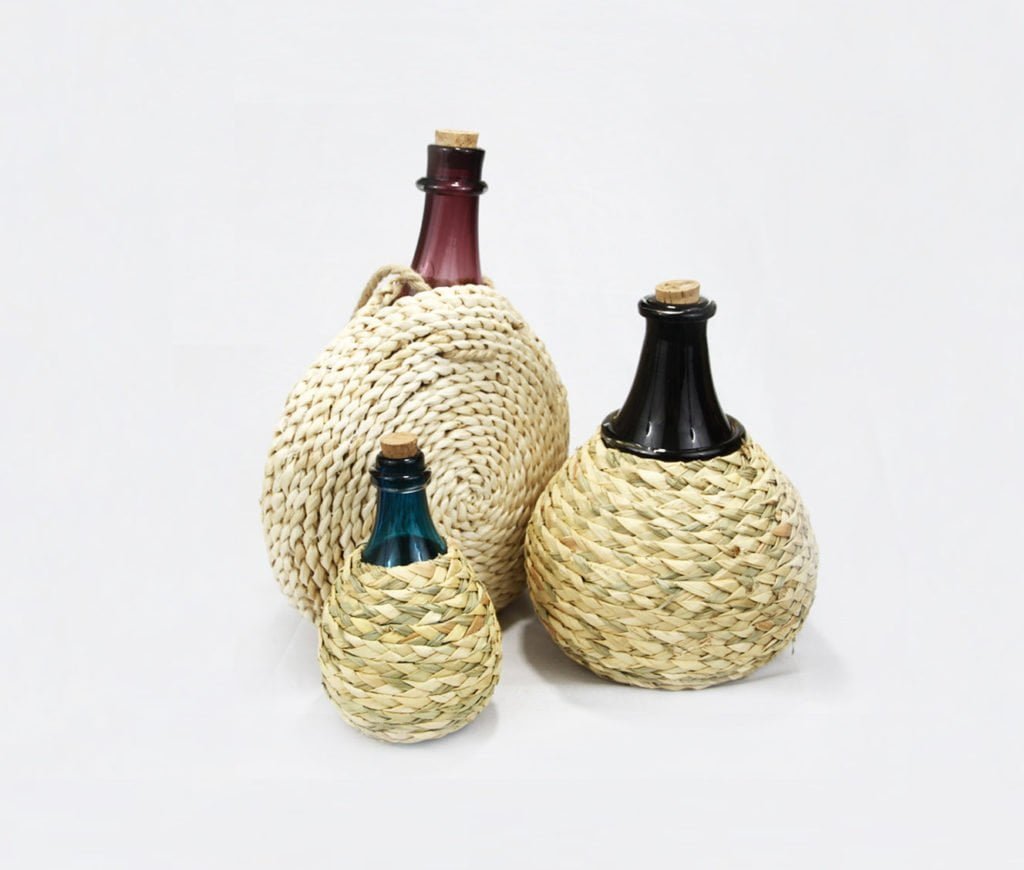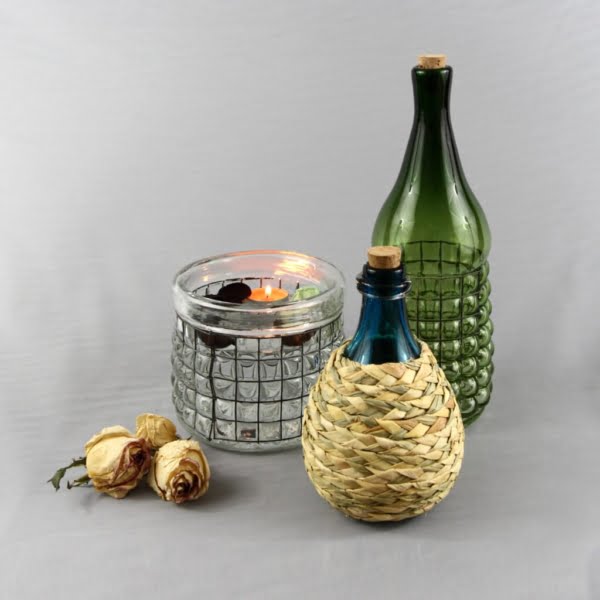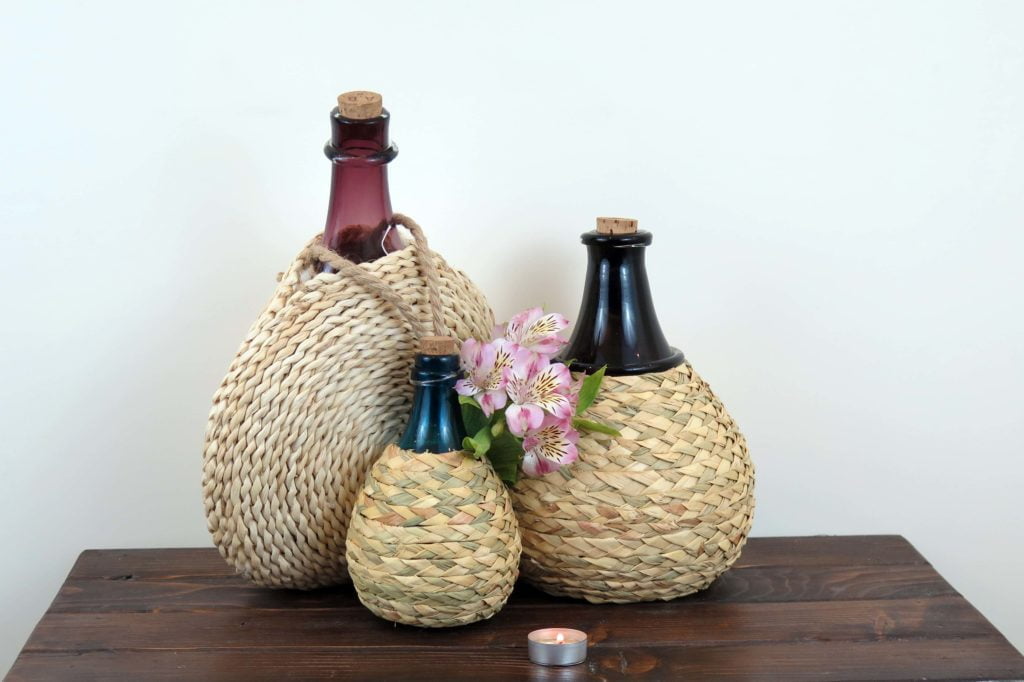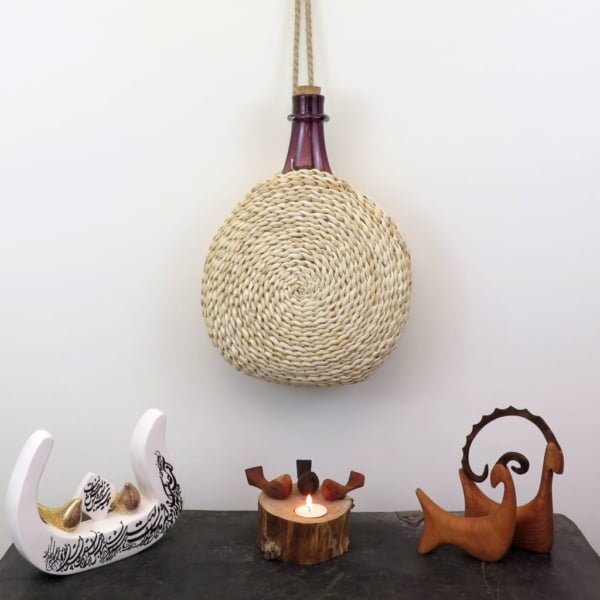Sama 7sin Set
- Handmade and hand-painted Sama ceramic plates make a great 7 Sin set for this Nowruz.
- set of 6 small and 1 large plate and wooden mirror. These handmade plates are decorated with hand painting of Sama dance.
- Material: ceramic
- the small plate is R 17cm
- The large plate is R 25cm
- Mirror size: 35 x 20 cm
- Decorative and dinnerwear
The Items Of Haft seen
| NUMBER | ITEM | SYMBOLIC MEANING |
|---|---|---|
| 1 | Sabzeh | Wheat, barley, or lentil sprouts: symbolizing rebirth and growth. |
| 2 | Samanu | Sweet pudding made from wheat germ: symbolizing sweetness and fertility. |
| 3 | Senjed | Dried oleaster fruit: symbolizing love. |
| 4 | Seer | Garlic: symbolizing medicine and health. |
| 5 | Seeb | Apple: symbolizing beauty and health. |
| 6 | Somagh | Sumac: symbolizing the sunrise and new beginnings. |
| 7 | Serkeh | Vinegar: symbolizing age and patience. |
Sama Dance
Sama is the name of a traditional dance from the Persian Gulf region, which is characterized by its intricate, spinning movements and its use of handkerchiefs or scarves. The dancers, usually women, spin and twirl while holding a scarf or handkerchief in each hand, creating a beautiful, flowing movement.
Sama dance is often performed to traditional music that is characterized by its fast and upbeat tempo. The dance is usually performed by a group of women in a circle, with the lead dancer at the center. The dance can be accompanied by singing and clapping, and is known for its energetic and lively movements.
In addition to its cultural and artistic significance, the Sama dance is also believed to have spiritual significance, and is often performed during religious and spiritual ceremonies, such as the mourning rituals of Muharram. The dance is closely associated with the culture of the Persian Gulf region and is popular among Iranian, Arab and Turkic communities.
It’s worth noting that Sama dance is not limited to the Persian Gulf region, it is also popular in other areas that have been under the influence of Persian culture such as Central Asia and the Caucasus.






